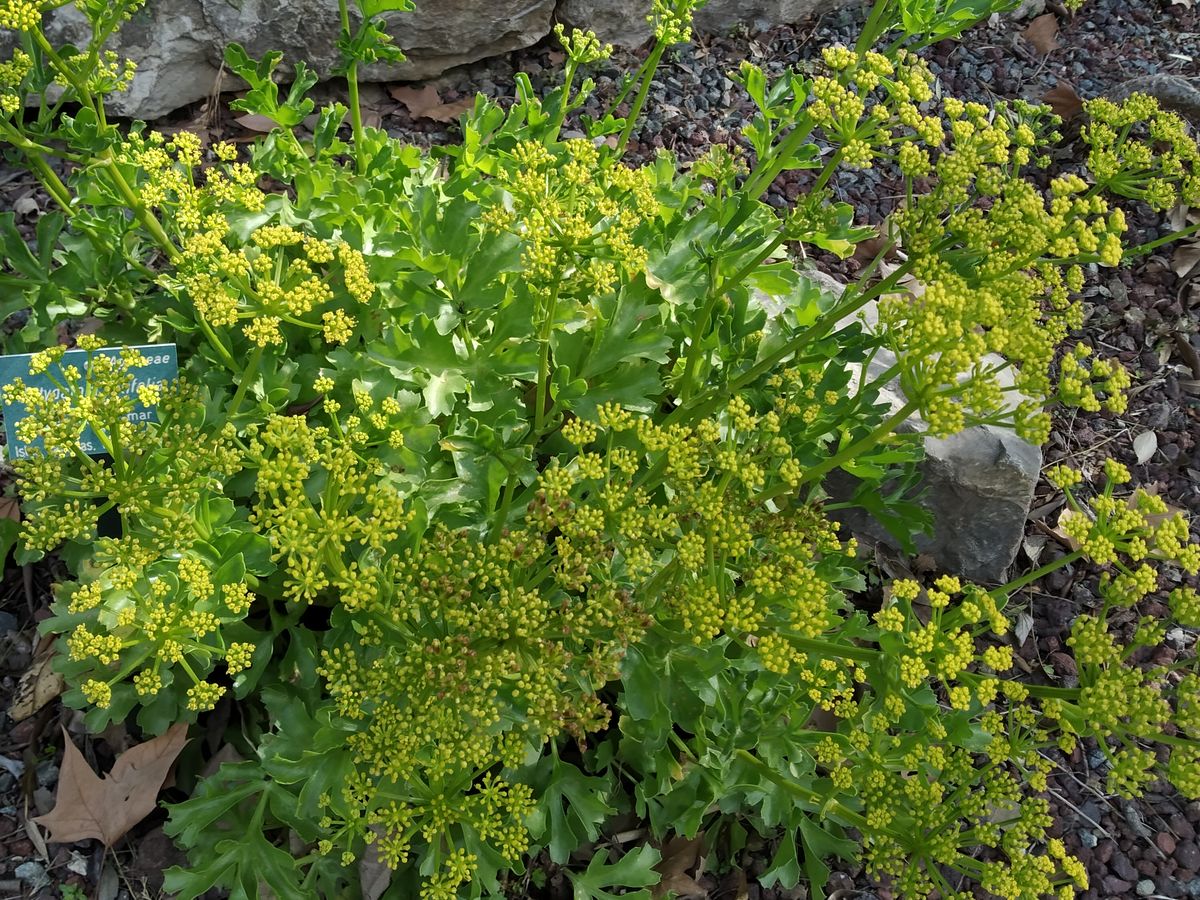Astydamia latifolia
Scientific name: Astydamia latifolia Baill.
Family: Apiaceae
Common name: Canary Samphire, Lettuce of the Sea
Astydamia is a genus of plants with only one species, the one we are dealing with. The name has a mythological origin, it is dedicated to the nymph Astydamia, daughter of Oceanus, probably because it grows near the sea. The name of the species is Latin and refers to the fact that it has broad, flattened leaves.
It is a herbaceous plant that does not exceed half a meter in height. It is naturally distributed throughout the Canary Islands and northwest Africa. The leaves are light green, very lobed and with serrated and wavy edges, so it has some resemblance to lettuce. Leaves and stems are succulent, i.e., fleshy in texture; stems may be lying on the ground or erect. The roots are deep. It produces inflorescences in umbel, about 10 cm, in which the small flowers are grouped, yellowish in color and not very prominent. More showy is the coloration of the fruits, intense green or straw-brown; they measure about one centimeter and are oval and flattened. The seeds can float in the sea for a long time, which helps their dispersal along the coasts.
Sea lettuce contains a lot of vitamin C, and has beneficial properties for the digestive system. Ancient sailors used it as an antiscorbutic when passing through the Canary Islands on their way to America. It is an edible plant, which has been used in salads. Another of its uses was to clean the hands and mouth, so it was also known as napkin. In La Concepción it can be seen in the plot dedicated to the Canary Islands in La Rocalla with plants of Mediterranean climate.

